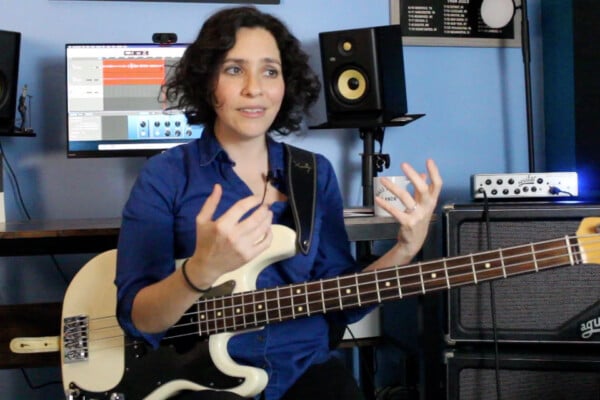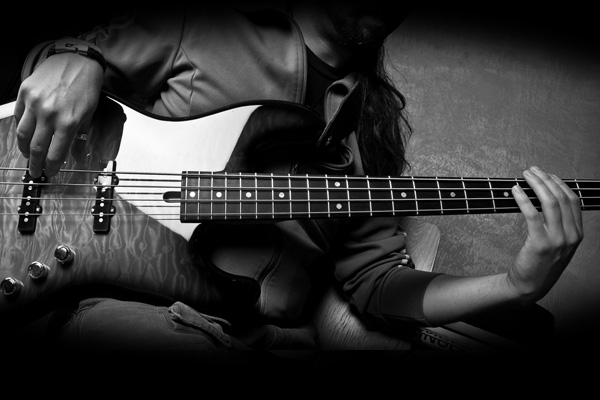How Do I Start Practicing Jazz?

Q: I’ve heard some jazz (usually newer stuff) that I like and I’m thinking that I should work on it. You and others also mention that it’s a good thing to practice in general, too. But it’s so confusing and most things I find online (and your columns) are usually too advanced for me. How should I start?
A: The beautiful thing about jazz is that it is ALL about expression and interpretation. For many, that manifests in some very tricky harmony and rhythm. I believe that it’s a natural place to go once you’ve studied so much that you can hear infinite possibilities, but it doesn’t have to be that way. Don’t feel pressured to sound hip, advanced and play complicated music. Jazz can be open, beautiful and soulful, too.
Sometimes I worry that jazz appears synonymous with difficult. It’s true that most jazz musicians have gone further with rhythm and harmony than in some other genres but it’s all a means to an end. In my mind, a great jazz musician is one who has mastered their craft to the point where they can play what they hear and loves to improvise (in essence, playing what they hear in real time, as it happens).
As you evolve musically, your tastes will likely change. This can lead you in any number of directions, some complicated, others not. Either way, I would say that the best thing to do is start simply. Start at the beginning.
Here is a list of songs that you might start out with. Most of these will be either based on the blues or in just one key. They will likely also have a singable melody that you can learn by ear:
- C-Jam Blues
- Autumn Leaves
- All Blues
- Blue Monk
- Cold Duck Time (I’ve played this with Les McCann dozens of times. So much fun!)
- Watermelon Man
- So What
- Fly Me To The Moon
- (a little more movement than the rest but it’s a beautiful tune and usually comes together pretty quickly)
- Summertime
- Blue Bossa
- Milestones
- Song For My Father
- Foot Prints
Additionally, you can practice playing against an iReal play-along to any Major blues or minor blues. This is a great way to explore improvising using the pentatonic scale or the blues scale (minor pentatonic scale with an extra half step in between the 4th and 5th (C E? F F# G B? C).)
What to do with this list?
- Start by learning the melody by ear. Listen to it over and over again until you can sing it. Then, find it on your instrument. If you’re having trouble playing it on your instrument, start by simply clapping the rhythm of the melody first and then add the notes.
- Look at the chart or, even better, try to hear the root motion. Sing, hum, and/or play along and work until you can play the roots of the song.
- Pay attention to the swing feel and try to internalize it. Feel (and time) is the name of the game when walking a bass line.
- Repetition. Just keep playing that tune until you can play bass, play the melody, and the start trying to improvise a melody of your own. I like practicing using iReal Pro on my phone or computer. You can find the tune on their forums (search the jazz genre and click the “1300 standards” link. It’ll load them all right in!). Don’t be afraid to play wrong notes, but just listen hard and keep doing it.
- You can often play over the whole tune using a simple pentatonic or blues scale, depending on the key and chord changes (a quick google search will usually bring up some suggestions for how to play over a given tune. Chances are that SOMEBODY has a video or blog about how to approach that tune.
There’s really no trick to it beyond:
- Listening to the music
- Experimenting and exploring the music without fear or insecurity. Just go for it!
- Repetition
- Start learning some basic scales that can work over different tonalities
- Major pentatonic
- Minor pentatonic
- Major scale
- Minor scale
- Dominant scale
- Finding a good teacher or another musician to work through the stuff with is very helpful.
These tunes are all a bit older but they are fantastic places to start with the style (it’s likely where everybody that you’re hearing started, too)!
Keep at it and you’ll quickly figure out how to expand beyond these suggestions and start diving deeper and deeper into understanding harmony, changes, walking bass lines, improvisation, and how to swing your butt off!
Most importantly, have fun!
Have a question for Damian Erskine? Send it to [email protected]. Check out Damian’s instructional books, Right Hand Drive and The Improviser’s Path.



